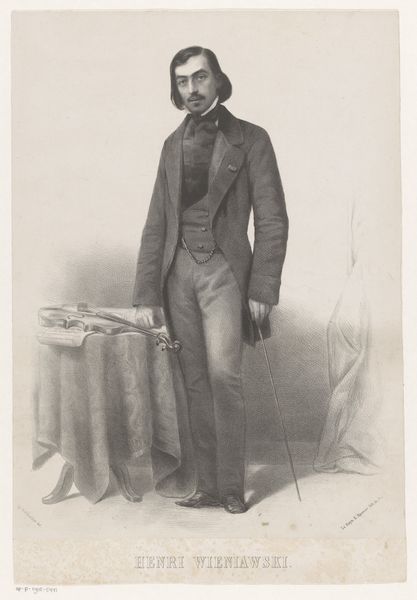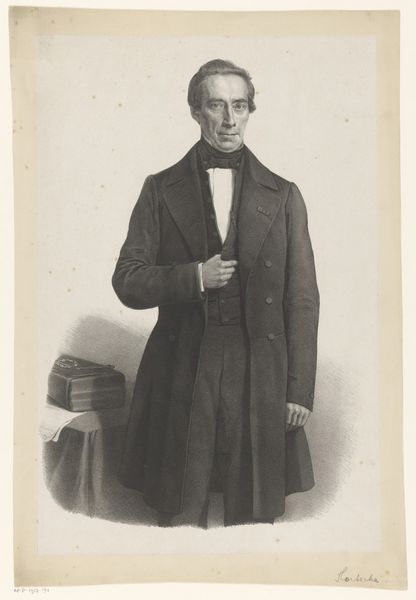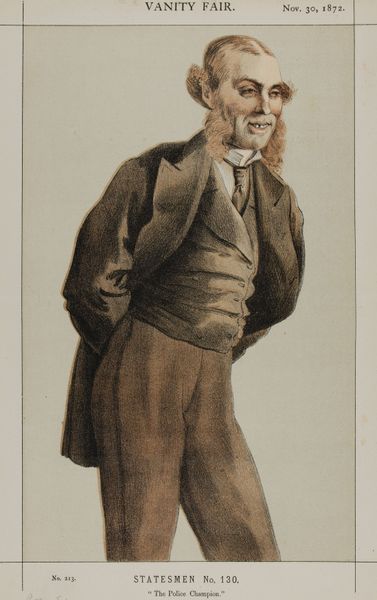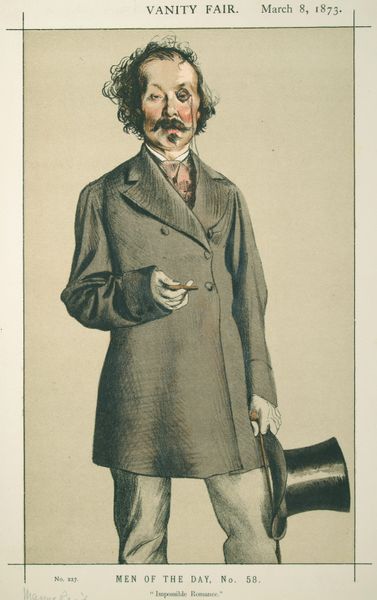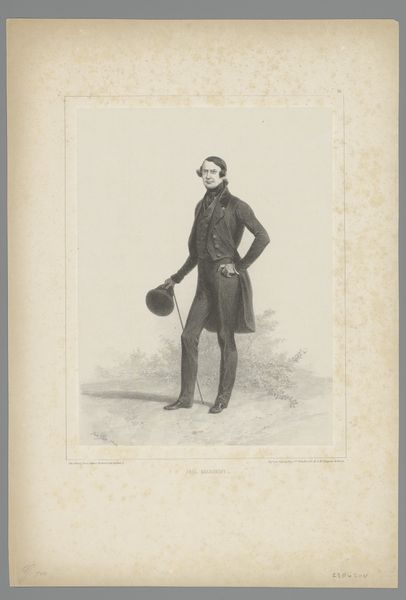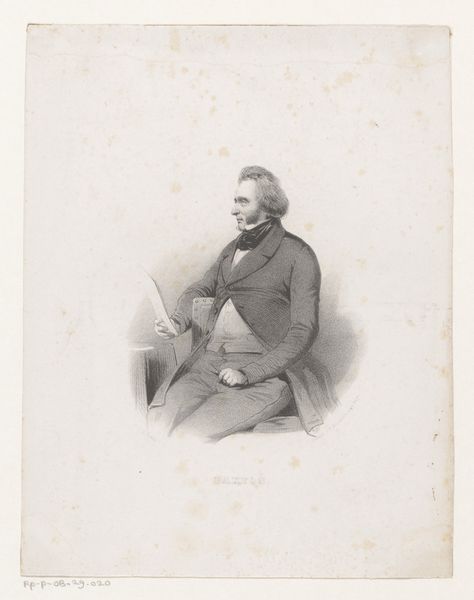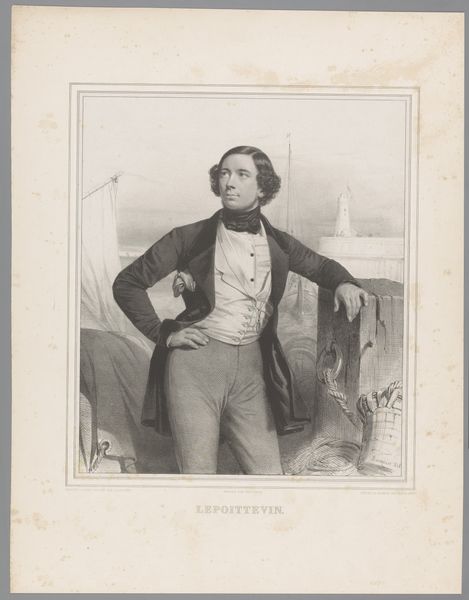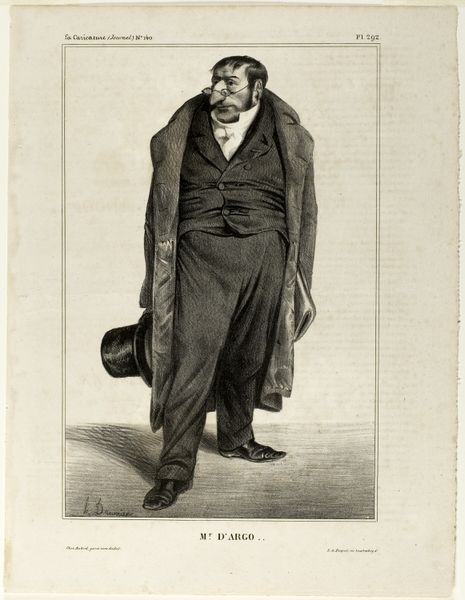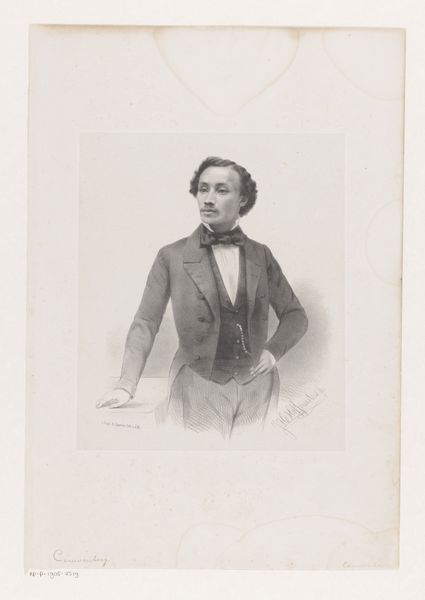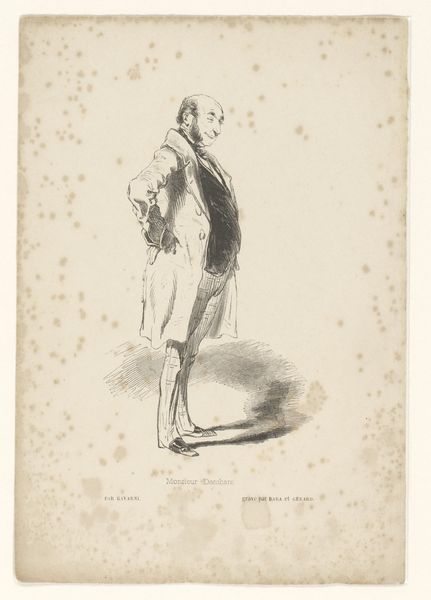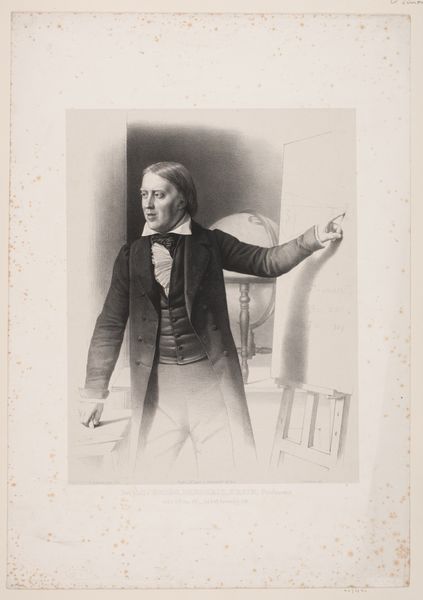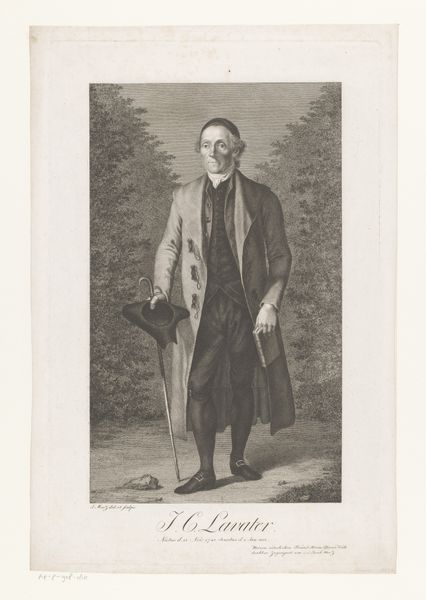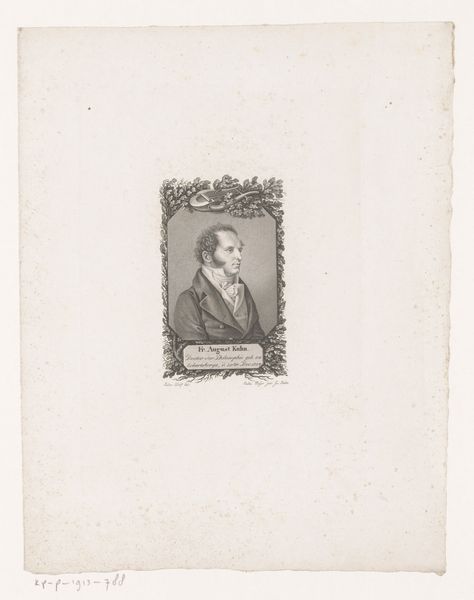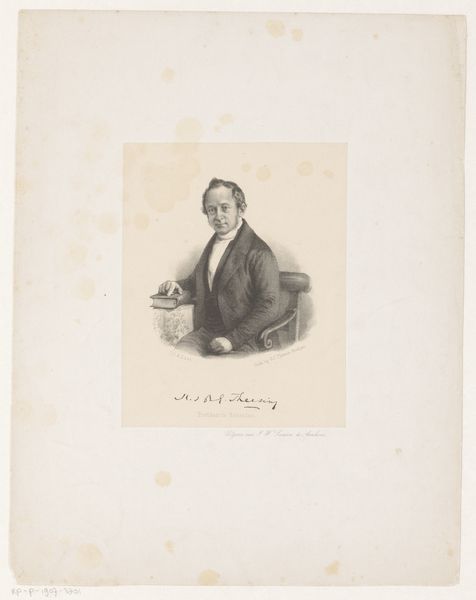
lithograph, print
#
portrait
#
lithograph
# print
#
charcoal drawing
#
figuration
Dimensions: 335 mm (height) x 235 mm (width) (bladmaal)
Editor: Here we have "J.P. Tønder," a lithograph portrait from somewhere between 1834 and 1866. The figure’s slightly disheveled appearance gives it a surprisingly modern feel to me. What can you tell me about its historical context? Curator: Well, consider that this lithograph was produced during a period of significant social and political upheaval in Europe, even in a place like Denmark. Printmaking, like lithography, democratized imagery. Think about it: portraits used to be the exclusive domain of the wealthy. Editor: So, a piece like this might have had a broader social impact than a painted portrait? Curator: Exactly. Lithographs allowed for wider distribution of images. Could this image challenge the traditional representation of public figures? The sitter’s “disheveled” look, as you called it, may indicate a departure from the more polished portrayals typically commissioned by the elite. Editor: It's almost as if he's being presented as an everyman, in a way. It makes you wonder about the intended audience. Curator: Precisely. Consider the role of the Statens Museum for Kunst itself; how does an institution shape the meaning of a work like this, shifting from popular image to a cultural artifact? Editor: So, displaying it here changes how we view it; it goes from representing someone, to being art about someone. Curator: It's a layered process. Our understanding is built by considering its initial creation, reproduction, circulation, and eventual institutionalization. Editor: I never thought about portraits having such social and political weight. Thanks, that gives me a lot to consider. Curator: My pleasure, I learned some valuable lessons from your insightful reading of the portrait as well.
Comments
No comments
Be the first to comment and join the conversation on the ultimate creative platform.
